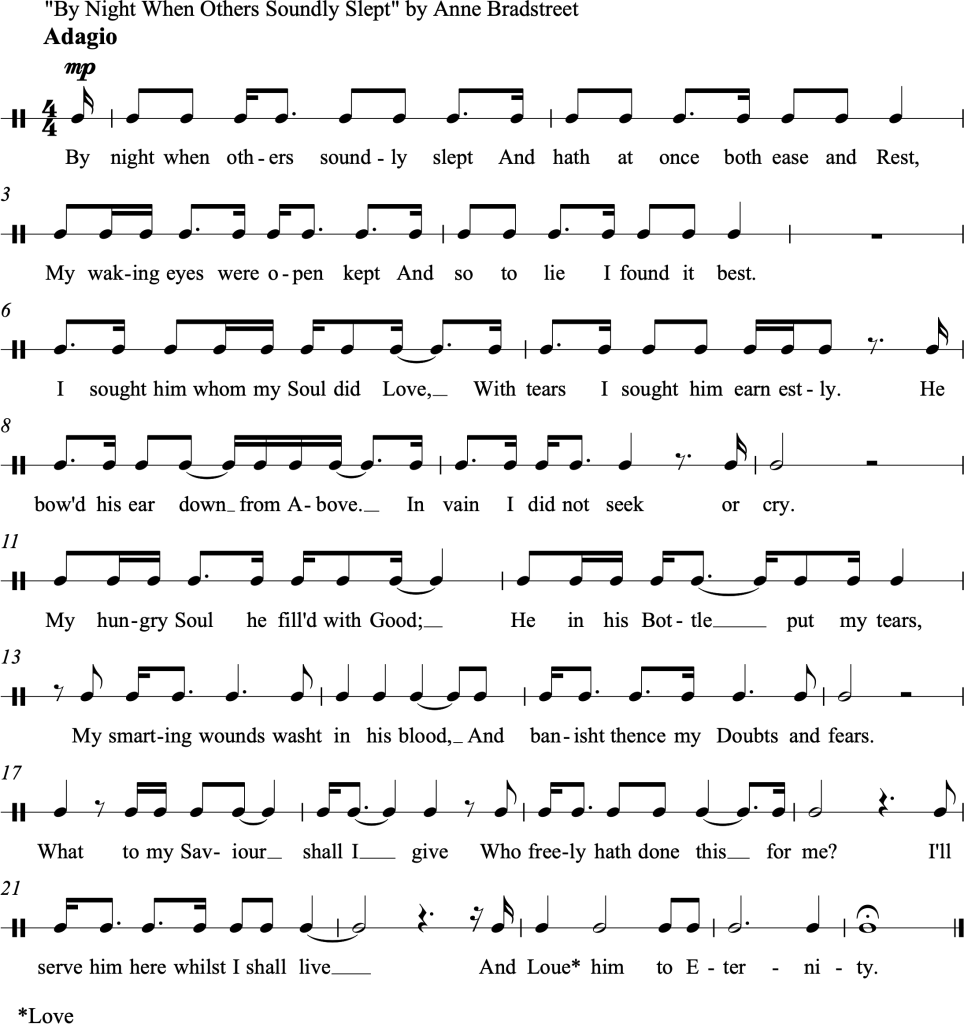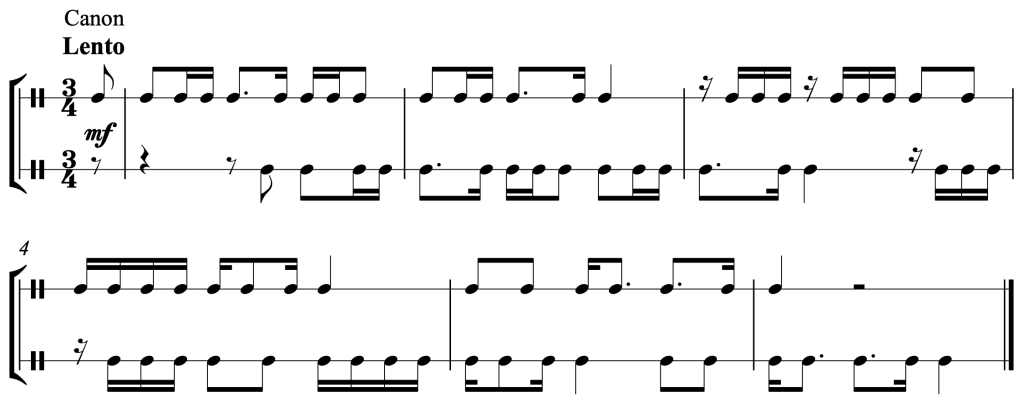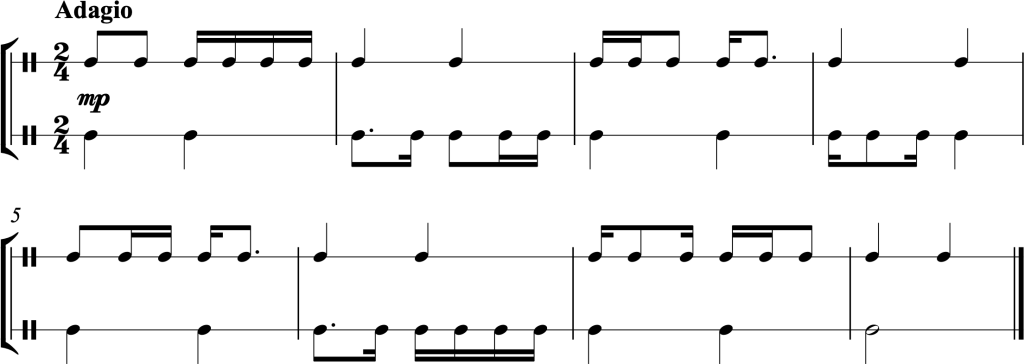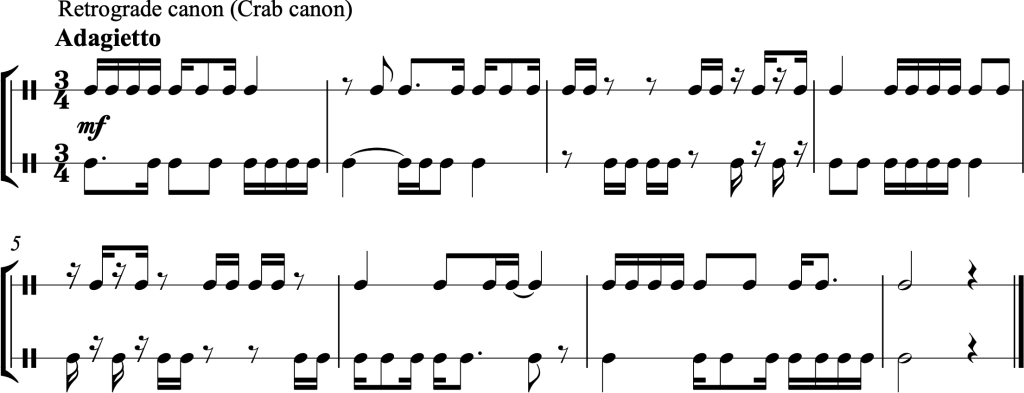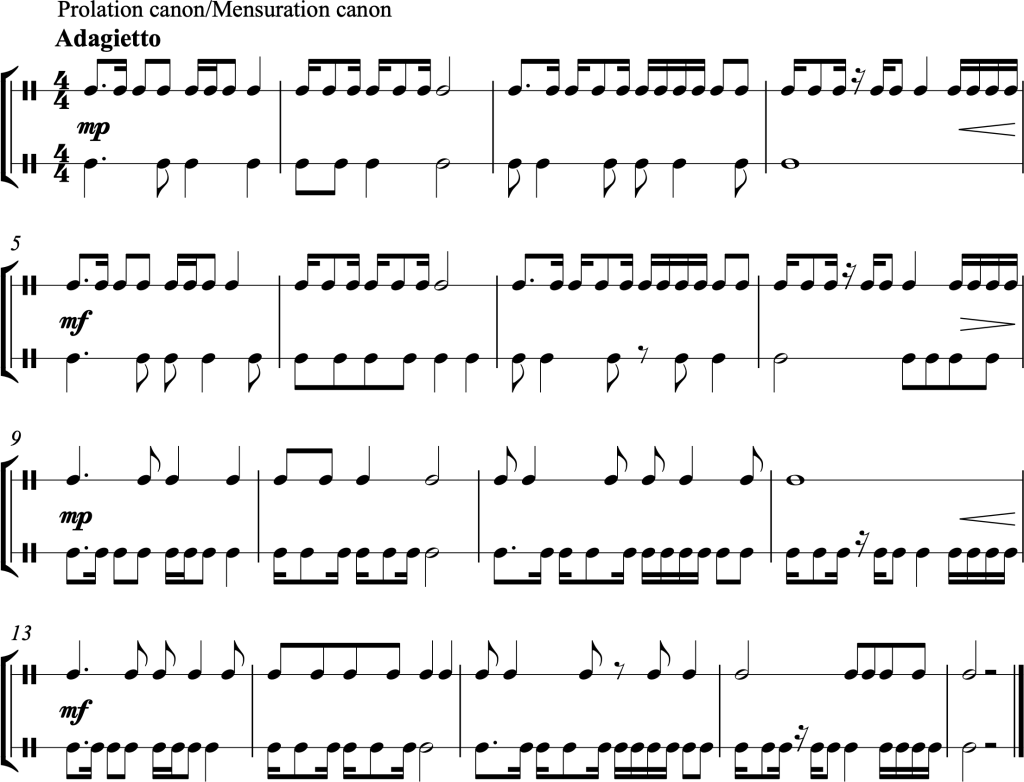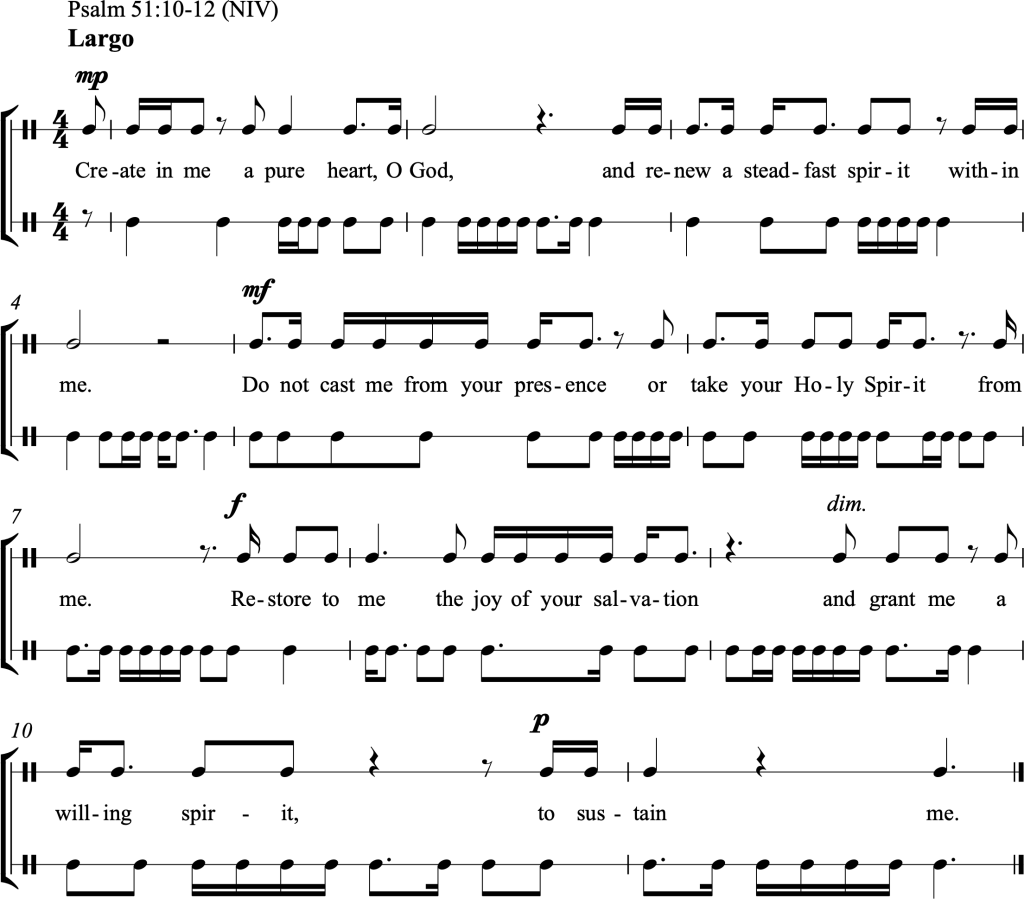Chapter 6: Simple Meter—dotted quarter notes
About This Chapter
About This Chapter: We’ve already seen dotted half notes and dotted quarter notes. In this chapter, we’ll take what we know about dots and apply it to eighth notes. Remember that a dot means that we add half of the note’s value to itself. So for a dotted eighth note, we have to hold it for one eighth note plus half that value (a sixteenth note). Check out the figure below. Measures 1 and 2 should sound identical, as should measures 3 and 4.
Section A—Dotted eighth notes on the beat (“1___a”)
Practice
Practice A:
 Practice by performing along with this audio file, which features a metronome click and the notated rhythm. You will hear two measures of wood block to establish the tempo before the exercise begins.
Practice by performing along with this audio file, which features a metronome click and the notated rhythm. You will hear two measures of wood block to establish the tempo before the exercise begins.
Next, try performing along with this audio file, which features the notated rhythm but no metronome click. You will hear two measures of wood block to establish the tempo before the exercise begins.
1.
2.
3.
4.
5.
6.
7.
8.
9.
10.
Section B—Dotted eighth notes off the beat (“1 e___”)
Practice
Practice B:
 Practice by performing along with this audio file, which features a metronome click and the notated rhythm. You will hear one measure of wood block to establish the tempo before the exercise begins.
Practice by performing along with this audio file, which features a metronome click and the notated rhythm. You will hear one measure of wood block to establish the tempo before the exercise begins.
Next, try performing along with this audio file, which features the notated rhythm but no metronome click. You will hear one measure of wood block to establish the tempo before the exercise begins.
11.
12.
13.
14.
15.
16.
17.
18.
19.
20.
21.
22.
23.
Section C—Two-part rhythms featuring dotted eighth notes
Practice
24.
25.
26.
27.
28.
29.
30.
31.
32.
33.

























